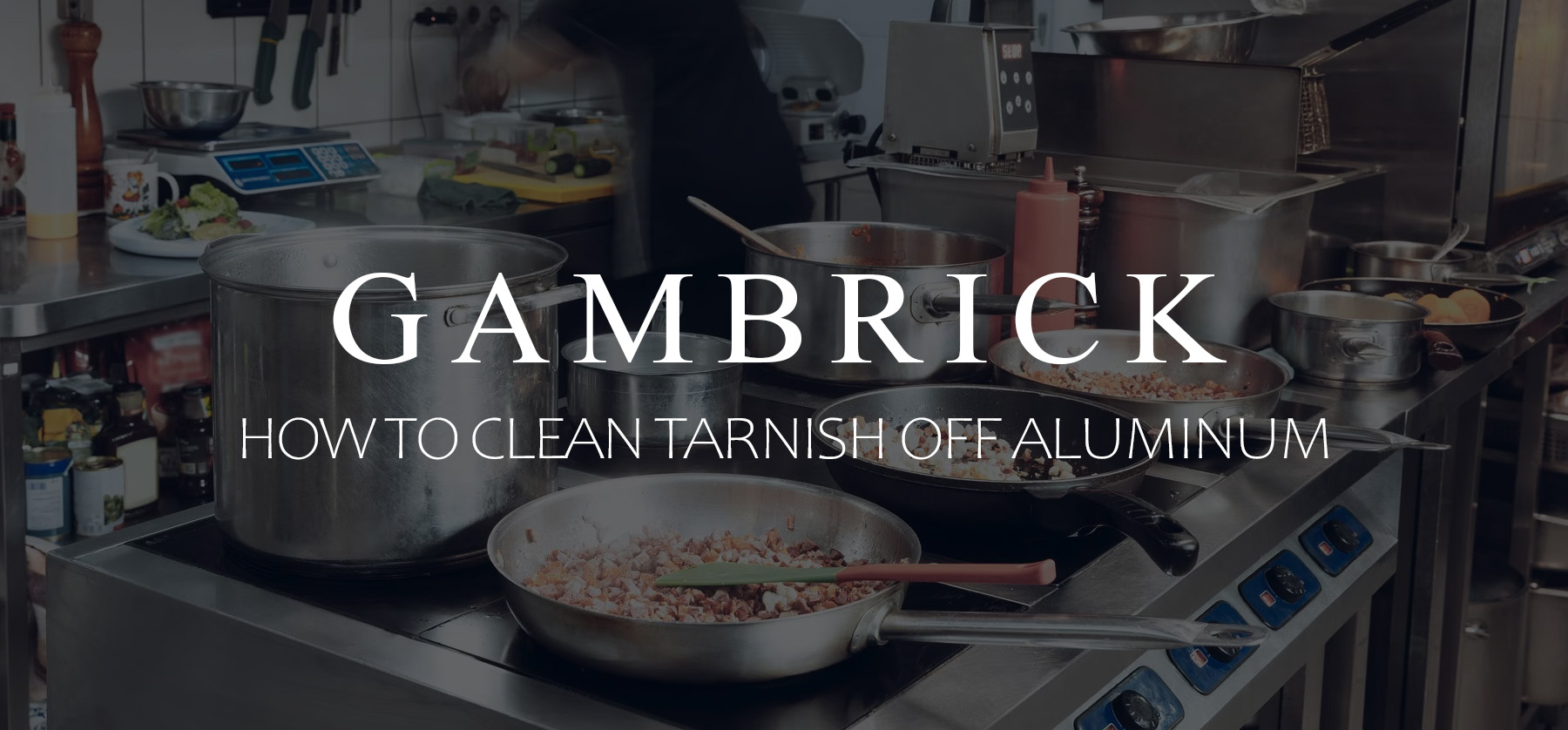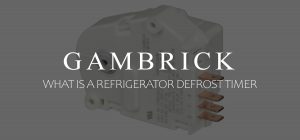How To Clean Tarnish Off Aluminum
Aluminum is a very popular metal for making pots and pans because of its versatility, light weight, and durability. Over time, aluminum can become tarnished, which can affect its appearance and strength. Tarnish is a layer of corrosion that forms on the surface of aluminum when it’s exposed to air or moisture. This layer can appear as a dull gray, black, or brown film, and it can be challenging to remove without damaging the metal. Knowing how to clean tarnish off aluminum is important to maintain a beautiful shine and prevent damage. Start by mixing one part vinegar or lemon juice with one part warm water in a bowl. Next, dip a clean cloth into the mixture and wipe down the aluminum. Scrub areas that have the most staining. Finally, rinse the metal with clean water and dry it with a soft cloth or let it air dry.
For extremely tarnished pots and pans, mix one tablespoon of baking soda with two cups of water, one tablespoon of salt and one cup of vinegar until it creates a paste. Apply the paste to the aluminum and scrub with a brush in a circular motion. Rinse with clean water and dry it off.
If homemade solutions don’t work, try a commercial aluminum cleaner. They’re stronger than homemade solutions but generally contain chemicals cleaners so I always start with natural cleaners first.
It’s important to clean tarnish from aluminum because it not only affects the appearance of the metal, but it can also weaken its structural integrity over time. If you have an aluminum cookware set that’s tarnished, it can eventually impact the heat distribution and cooking quality of the pans.
Materials Needed
Cleaning tarnish off aluminum requires some basic household tools and/or materials.
You’ll need to gather the following materials:
- Distilled White Vinegar or Lemon Juice: Vinegar is an all natural cleaning agent that’s safe to use on aluminum. It helps dissolve the tarnish which leaves the metal looking shiny and new.
- Baking Soda: Baking soda is another all natural cleaning agent that can help remove tarnish from aluminum. It’s slightly abrasive, which can help scrub away stubborn stains.
- Soft-Bristled Brush or Sponge: Use a soft-bristled brush or sponge to scrub away the tarnish without scratching the aluminum. Avoid using any harsh or abrasive materials like steel wool or scouring pads which can damage the metal.
- Microfiber Cloth or Soft Towel: After cleaning the aluminum, you’ll need a microfiber cloth or soft towel to dry and polish the surface.
- Bucket or Container: You’ll need a container to mix the cleaning solution and to hold the aluminum item while it soaks.
- Water: You’ll need access to a water source to make the solution and rinse the aluminum after cleaning.
- Cleaner: If natural remedies don’t work, you’ll need a store bought aluminum cleaner.
- Protective Gloves: If you use a store bought aluminum cleaner, wear cleaning gloves to avoid skin irritation.
With these materials, you’ll be well-equipped to clean tarnish from aluminum, restore its appearance and protect it from damage. Many of these materials can probably be found in your pantry or at your local grocery store.
Preparation
Before you start cleaning, it’s important to prepare the aluminum to avoid damage or discoloration.
Here are some steps to follow:
Remove loose dirt or debris: Use a dry cloth or brush to remove any loose dirt, dust, or debris stuck on the aluminum. This makes it easier to see the tarnish and helps prevent scratches when you clean.
Test an inconspicuous area: Before using a store bought cleaner, test a small area of the aluminum to make sure it doesn’t cause discoloration. This is especially important if the item you’re cleaning is an antique or has sentimental value. With homemade solutions there’s a much lower chance of discoloration.
Wear protective gloves: To protect your skin from chemicals and skin irritation, wear protective gloves as you clean.
Ensure proper ventilation: When working with a store bought aluminum cleaner, make sure you have good ventilation to avoid inhaling fumes.
Mix the cleaning solution: Depending on the severity of the tarnish, you can mix either baking soda or vinegar with water to create a cleaning solution. Mix 1 tablespoon of baking soda with 2 cups of water for mild tarnish. For heavier tarnish, mix 1 part vinegar to 1 part water. For extremely heavy tarnish, mix one tablespoon of baking soda with two cups of water, one tablespoon of salt and one cup of vinegar until it creates a paste.
Place the item in a container: After mixing the cleaning solution, place your aluminum item in a container that’s large enough to fully submerge it. This will allow the solution to penetrate the tarnish and clean the aluminum.
Cleaning Methods
Once you’ve prepared the aluminum and have you solution mixed and ready, it’s time to start cleaning the tarnish.
Here are the steps to follow:
- Apply the cleaning solution: Pour the baking soda or vinegar cleaning solution over the aluminum surface. Make sure to cover the entire area. Let the solution sit for a few minutes to allow it to penetrate into the tarnish.
- Scrub the tarnished areas: Using a soft-bristled brush or sponge, gently scrub the tarnished areas in a circular motion. Be sure to avoid using any harsh or abrasive materials like steel wool or scouring pads because they may damage the metal.
- Rinse with water: After scrubbing, rinse the aluminum thoroughly with water to remove any leftover cleaning solution.
- Dry the surface: Once the aluminum is rinsed, use a microfiber cloth or soft towel to dry and polish the surface. Gently buff the surface in a circular motion to bring out the shine.
- Repeat the process as needed: If the tarnish is heavy or hasn’t been cleaned in a long time, you may need to repeat the cleaning process multiple times to fully remove it. Try a different solution the 2nd time you clean it.
Vinegar and baking soda are effective natural cleaners for aluminum, but they may not be suitable for all types of aluminum. If you’re unsure whether a cleaning solution is safe for your aluminum item, be sure to test it on an inconspicuous area first.
Don’t use an acidic or abrasive cleaning solution or materials such as lemon juice, bleach, or steel wool to clean tarnish off aluminum. They can cause damage and may even make the tarnish worse.
Aftercare
After cleaning the tarnish off your aluminum pots and pans, it’s important to take some aftercare steps to keep them looking great.
Here are some tips to follow:
- Store the item properly: To avoid further tarnishing, store aluminum pots and pans in a dry, cool, and well-ventilated area. Avoid storing them in a damp or humid area, as this can cause the metal to oxidize and tarnish again.
- Use a protective coating: To help prevent future tarnishing, apply a protective coating to the aluminum. This can be a spray-on coating or a clear wax or polish. Make sure to follow the manufacturer’s instructions for proper application.
- Clean the item regularly: Regular cleaning can help prevent the buildup of tarnish and keep your aluminum items looking shiny and new. Use a gentle cleaning solution, such as a mixture of mild dish soap and warm water, and avoid using abrasive materials or cleaners.
- Don’t use harsh chemicals: To prevent damage to the aluminum, avoid exposing it to harsh chemicals like bleach, ammonia, or acidic cleaners. Substances like these can cause discoloration, pitting, or other forms of damage.
- Seek professional help if needed: If your aluminum is heavily tarnished or damage, it may be best to seek the help of a professional cleaner or restorer. They can provide expert advice and help restore your item to its original condition.
With proper cleanings and care, your aluminum pots and pans can last for decades still looking like new.
How Do You Clean Aluminum With Vinegar?
One of the most effective cleaners for removing tarnish from aluminum pots and pans is vinegar. But straight vinegar is a little too strong. Instead, create a solution by mixing it with warm water and other ingredients.
To make a mild cleaning solution for aluminum, mix 1 part white vinegar to 1 part of water. This creates a mild acidic solution that can be used to clean tarnished aluminum.
- Mix the solution: Mix equal parts white vinegar and water in a bowl.
- Apply the solution: Pour the vinegar solution onto the tarnished areas of the aluminum. Make sure to completely cover all of the tarnish.
- Let it sit: Let the solution sit on the surface of the aluminum for 15-20 minutes to allow it to penetrate the tarnish.
- Scrub the tarnished areas: Using a soft-bristled brush or sponge, gently scrub the tarnished areas in a circular motion. Don’t use any harsh or abrasive materials, as these can scratch the aluminum.
- Rinse with water: After scrubbing, rinse the aluminum thoroughly with water to remove any leftover cleaning solution.
- Dry the surface: Once the aluminum is rinsed, use a microfiber cloth or soft towel to dry and polish the surface. Gently buff the aluminum in a circular motion to bring out the shine
Vinegar is an effective natural cleaner for aluminum, but it may not be suitable for all types of aluminum. If you’re unsure whether vinegar is safe for your aluminum pots and pans, test it on an inconspicuous area first.
How To Clean White Oxidation On Aluminum
Cleaning white oxidation on aluminum requires a slightly different approach than cleaning tarnish.
Here’s how to do it:
- Mix the solution: Mix together one tablespoon of cream of tartar and one tablespoon of water in a bowl to make a paste.
- Apply the paste: Apply some paste to the white oxidation. Make sure to cover the entire affected area.
- Let it soak: Let the paste sit on the surface of the aluminum for 15-20 minutes and soak into the oxidation.
- Scrub the oxidized areas: Using a soft-bristled brush or sponge, gently scrub the oxidized areas in a circular motion. Avoid using any harsh or abrasive materials, as they can scratch the aluminum.
- Rinse with water: After scrubbing, rinse the aluminum thoroughly with water to remove any leftover paste.
- Dry the surface: Once the aluminum is rinsed, use a microfiber cloth or soft towel to dry and polish the surface. Gently buff the aluminum in a circular motion to bring out the shine.
If the white oxidation is particularly stubborn or extensive, you may need to repeat the process more than once to fully remove it.
How To Clean Aluminum Without Scratching
Aluminum is a soft metal and can easily be scratched if you’re not careful. It’s important to use gentle cleaning methods to avoid damage. Salt is an effective yet safe abrasive to clean aluminum pot and pans. Lemon juice is another safe cleaner that helps restore aluminum’s luster. Vinegar can be used to clean off tarnish and oxidation. Scrub with with a sponge or soft bristle brush instead of harsh materials like steel wool.
Here are some tips on how to clean aluminum without scratching it.
- Use a soft cloth: When cleaning aluminum, use a soft cloth such as a microfiber towel or a non-abrasive sponge. Avoid using abrasive materials such as steel wool, wire brushes, or scouring pads, as these can cause scratches and damage to the surface.
- Use a gentle cleaning solution: Use a gentle cleaning solution such as mild dish soap, vinegar, baking soda, salt or lemon. Avoid using harsh chemicals such as bleach or acidic cleaners which can cause damage to the aluminum.
- Test the cleaning solution: Before cleaning the entire surface of your aluminum, test the cleaning solution on a small, inconspicuous area first to make sure it won’t cause damage or discoloration.
- Apply the cleaning solution: Apply the cleaning solution to the surface of your aluminum using a soft cloth or sponge. Don’t press too hard and work in a gentle circular motion.
- Rinse thoroughly: After cleaning the aluminum, rinse it thoroughly with clean water to remove any leftover cleaning solution.
- Dry and polish the surface: Once the aluminum is rinsed, use a microfiber cloth or soft towel to dry and polish the surface. Gently buff the surface in a circular motion to bring out its shine.
By following these tips, you can clean aluminum pot and pans without scratching them.
How To Make Homemade Aluminum Cleaner
Making a homemade aluminum cleaner is a simple and cost-effective way to clean your aluminum pots and pans. The great thing about homemade cleaners is that they’re safe, effective and fairly cheap. Most can be used out of ingredients you may already own like vinegar, baking soda, lemons, salt, cream of tartar, dish soap and warm water.
Here’s a recipe for a homemade aluminum cleaner:
- 1/2 cup white vinegar
- 2 tablespoons cream of tartar
- Water
- Spray bottle
- Soft cloth
Instructions:
Mix 2 tablesp0ons of cream of tartar with a 1/2 cup of vinegar until it forms a paste. Now add water to the mixture until it forms a thin liquid. Pour the solution into a spray bottle.
- Spray the solution onto the aluminum pots and pans you want to clean.
- Let the solution sit on the surface for a few minutes to penetrate any dirt or grime.
- Using a soft cloth, gently rub the surface in a circular motion.
- Rinse the aluminum surface with water to remove any leftover cleaning solution.
- Dry the surface with a soft cloth.
This homemade aluminum cleaner is effective at removing dirt, grime, and stains from aluminum pots and pans. It’s also safe and non-toxic. White vinegar acts as a natural acid to break down stubborn grime while the cream of tartar helps remove discoloration or stains on the surface.
Never use abrasive materials like steel wool or scouring pads to clean aluminum because they may scratch the surface.
How To Clean Tarnished Aluminum With Borax
Borax is a great way to clean tarnished aluminum pots and pans or baked-on stains. Combine Borax powder with a small amount of water until a paste is formed. Apply the paste to the stain or discoloration until it’s completely covered and let it sit for 10 to 60 minutes.
If the stain won’t come out after a single application, reapply the Borax paste. This time, use an old toothbrush or a bristle brush to scrub the Borax paste into the surface of the aluminum.
Once you’re done scrubbing, rinse the borax away with warm water. Then buff the surface of the aluminum pot with a soft rag.
Rinse the aluminum thoroughly before using it again after applying the Borax.
How To Clean Burnt Aluminum Pots
Cleaning burnt aluminum pots can be a challenge, but there are a few effective ways to remove burnt-on residue.
Here’s how to clean burnt aluminum pots:
- Dish soap
- Baking soda
- White vinegar
- Water
- Soft-bristled brush or sponge
- Non-abrasive scouring pad (optional)
Instructions:
Fill the burnt aluminum pot with hot water and add a few drops of dish soap. Let the pot soak for a few hours to loosen any burnt-on residue.
If the residue is really stuck on hard, sprinkle a layer of baking soda over the bottom of the pot. Then hen add enough white vinegar to cover the baking soda. Let the mixture fizz for a few minutes.
Use a soft-bristled brush or sponge to scrub the inside of the pot. Focus most of your attention on the areas with burnt-on residue. If necessary, use a non-abrasive scouring pad to remove any remaining residue.
Rinse the pot with hot water and inspect it for any remaining residue. If there’s still some residue, repeat the cleaning again until it’s all removed.
If the burnt-on residue is on the outside of the pot, mix a paste of baking soda and water and apply it to the affected area. Let it sit for 30 minutes, then use a soft-bristled brush or sponge to scrub the area. Rinse with water and dry with a soft cloth.
Don’t use harsh or abrasive materials like steel wool on aluminum as these can scratch the surface.
By following these steps, you can effectively clean burnt aluminum pots and pans, restoring them to a like new condition.
Summary: How To Clean Tarnish Off Aluminum
Aluminum is a very popular metal for making pots and pans because of its versatility, light weight, and durability. Over time, aluminum can become tarnished, which can affect its appearance and strength. Tarnish is a layer of corrosion that forms on the surface of aluminum when it’s exposed to air or moisture. This layer can appear as a dull gray, black, or brown film, and it can be challenging to remove without damaging the metal. Knowing how to clean tarnish off aluminum is important to maintain a beautiful shine and prevent damage. Start by mixing one part vinegar or lemon juice with one part warm water in a bowl. Next, dip a clean cloth into the mixture and wipe down the aluminum. Scrub areas that have the most staining. Finally, rinse the metal with clean water and dry it with a soft cloth or let it air dry.
For extremely tarnished pots and pans, mix one tablespoon of baking soda with two cups of water, one tablespoon of salt and one cup of vinegar until it creates a paste. Apply the paste to the aluminum and scrub with a brush in a circular motion. Rinse with clean water and dry it off.
If homemade solutions don’t work, try a commercial aluminum cleaner. They’re stronger than homemade solutions but generally contain chemicals cleaners so I always start with natural cleaners first.
It’s important to clean tarnish from aluminum because it not only affects the appearance of the metal, but it can also weaken its structural integrity over time. If you have an aluminum cookware set that’s tarnished, it can eventually impact the heat distribution and cooking quality of the pans.
If you have any questions or comments about how to clean tarnish from aluminum, email any time.






















